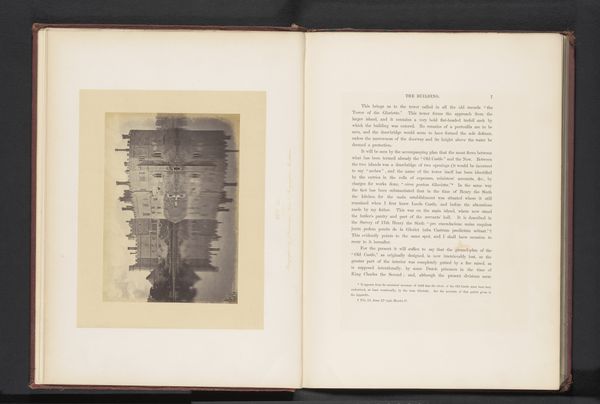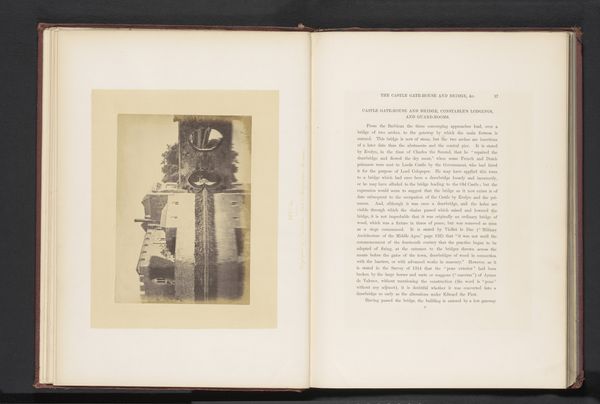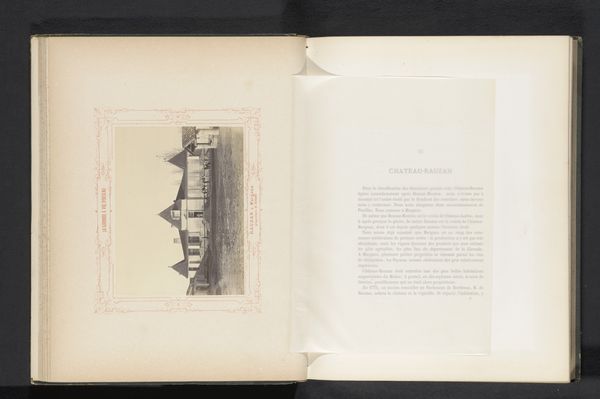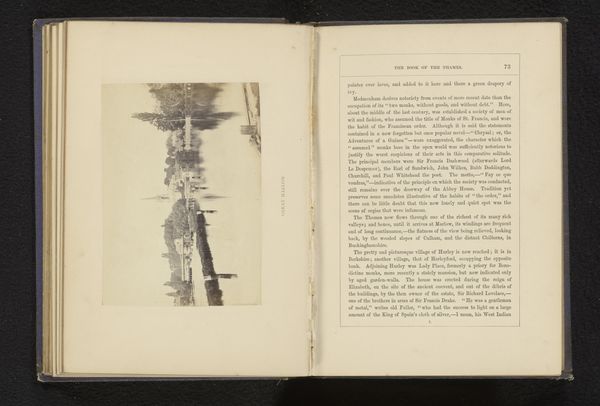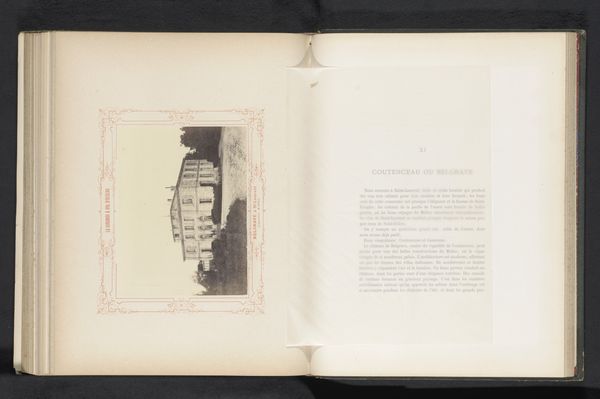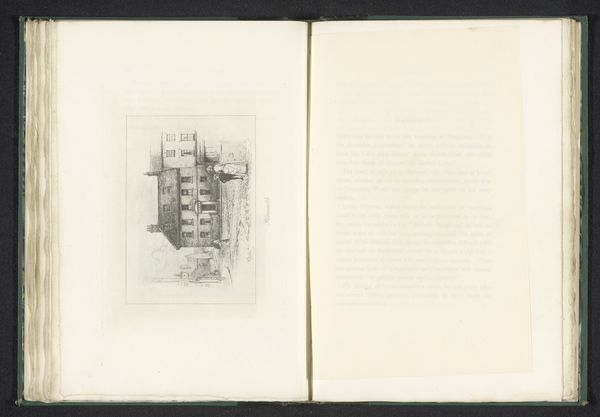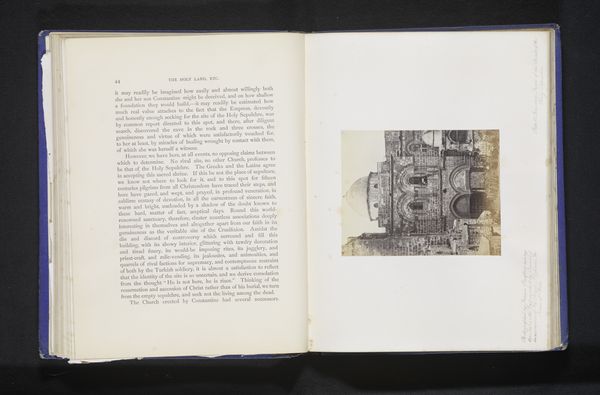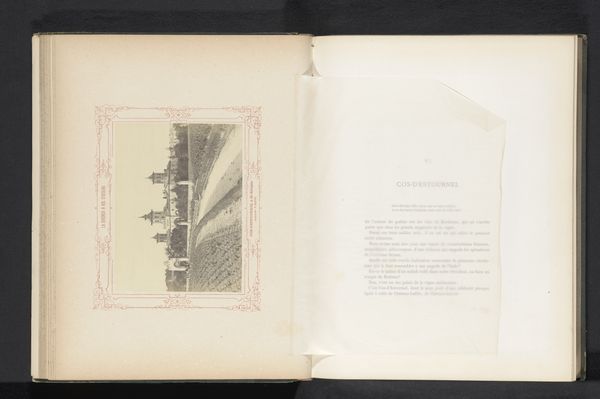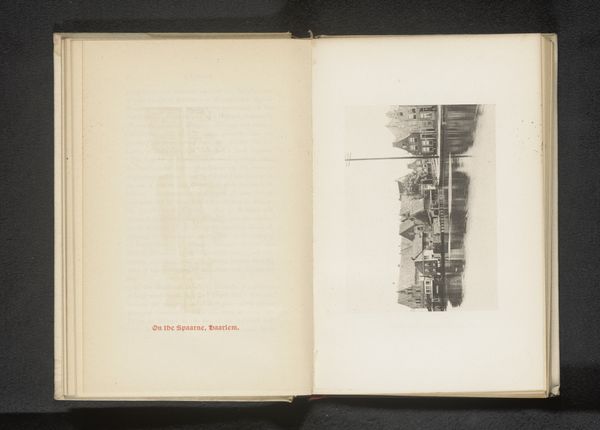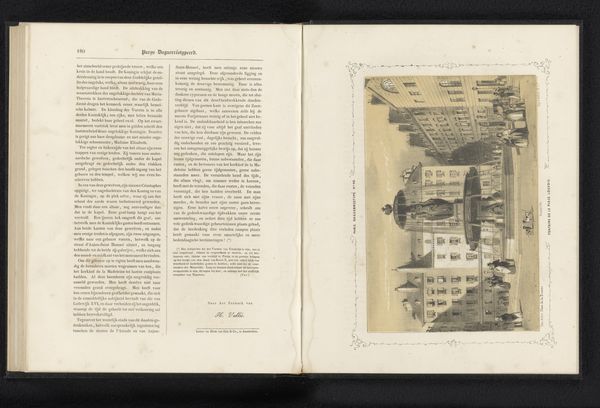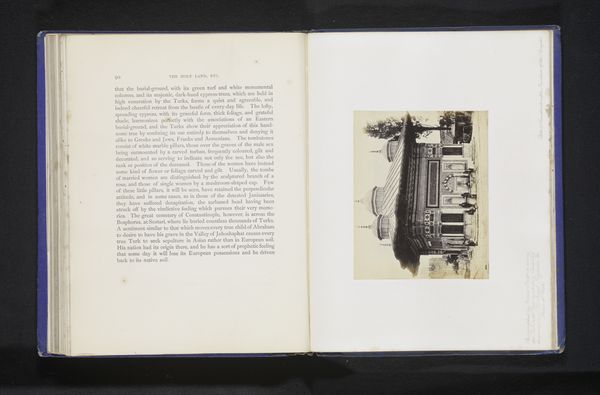
Dimensions: height 145 mm, width 201 mm
Copyright: Rijks Museum: Open Domain
Editor: So, here we have a rather interesting print, titled "Gezicht op Leeds Castle," made before 1869 by J. Cruttenden. It’s an albumen print, so a form of photography, and it’s displayed in an open book. What strikes me is the slightly blurred effect; it almost looks like a dreamscape. What do you see in it? Curator: Well, let's consider the albumen print process itself. Creating an image like this involved coating paper with albumen, from egg whites, then sensitizing it with silver nitrate before contact printing. The labor! All that material processing… The dreamscape effect you describe might be less about artistic intention and more a consequence of the lengthy exposure times and the inherent limitations of early photographic materials. Editor: So you're saying the materials themselves are almost dictating the aesthetic? Curator: Precisely! And it begs the question, how does the act of making, of crafting an image in this way, affect our understanding of Leeds Castle itself? Is it documenting history or performing labor? How might someone who consumes this photograph engage differently with the image knowing the extensive craft, material sourcing, and time-consuming darkroom processing that goes into it? Editor: I see what you mean. Thinking about all those steps really shifts my perspective from simply seeing a pretty castle to considering the industrial effort behind the image. It becomes less about the "romantic" view, and more about the cultural context and labor necessary to make and circulate this image. I never would have considered egg whites when looking at architecture. Thanks! Curator: Exactly. Considering these things brings us closer to a richer understanding of how such "views" gain cultural power and status. Always consider material and production.
Comments
No comments
Be the first to comment and join the conversation on the ultimate creative platform.
